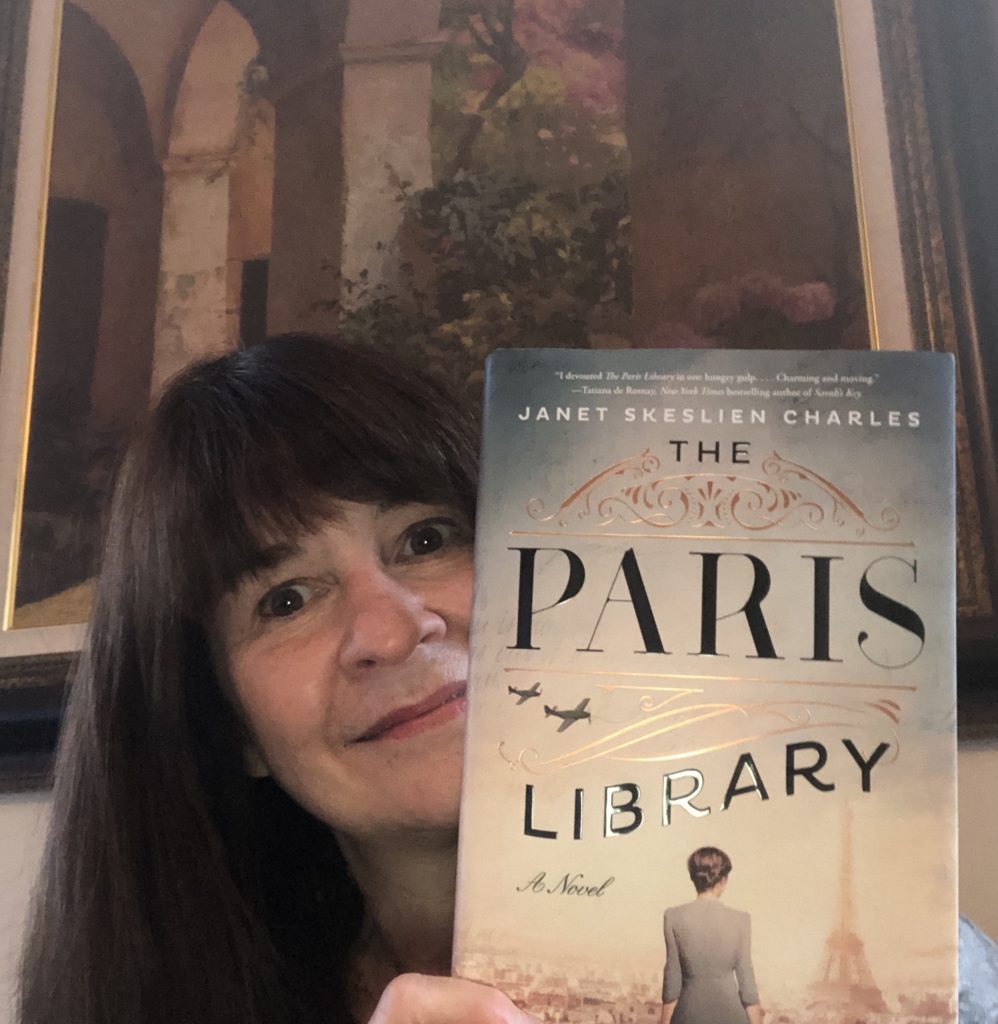Library Assistant Andrea Nelson recommends The Paris Library: A Novel by Janet Skeslien Charles.
It was Miss Reeder who said about books that ‘no other thing possesses that mystical faculty to make people see with other people’s eyes. The Library is a bridge between cultures.’
The Paris Library

As Hitler’s troops advance across Europe, Odile Souchet avoids old men and their constant talk of war. Germany stands no chance against France’s superior army and its Maginot Line, bien sûr! Like many young Parisiennes in 1939, the first of two heroines we meet in Janet Skeslien Charles’ The Paris Library is more concerned with day-to-day matters. Fresh out of Library School, she longs for employment at the prestigious American Library of Paris, where she could spend her days immersed in a vast and varied collection of books, rare manuscripts, international magazines and newspapers—rubbing shoulders with its quirky patronage of diplomats, writers, expatriates, politicians, and eccentric French bibliophiles. As a librarian at ALP, Odile could become a modern, independent, woman in the workforce. . .much to the ire of her traditional French parents.
Meanwhile, across the pond and forty years in the future, we meet a second protagonist. Lily is a brainy misfit facing down the barrel of adolescence in a dusty Montana cow town. Bored, restless, and feeling betrayed by her best friend, she distracts herself by inventing stories about the other misfit that lives next door, an elegant old widow with a mysterious past.
France 1939: When the American Library receives word that the Maginot Line has failed, Odile’s world shatters. With the French Army in full retreat and Nazi troops closing in, the City of Light grows dark and Parisiennes prepare for bombing. The devoted staff, volunteers, and patrons prepare the American Library for German occupation.
Back in the states, Lily faces a different kind of battle—the kind history forgets, but never the survivors.
By setting Odile’s story in Paris during World War II, the author gives the reader a clairvoyant lens. She uses that literary device to build tension. The reader knows the geopolitical future; Odile does not. The author deliberately does not provide the reader the same lens in Lily’s story. Froid, Montana is a real place, but, unlike Paris, it’s historical significance is not widely known. The juxtaposition of such outwardly dissimilar protagonists emphasizes the universal nature of human response to emotions such as fear and betrayal, whatever the cause.
While Odile exists in the confines of history, Lily is allowed to write her own story. Can she learn? Will she make different choices? At times, the transition between the two storylines is jolting. The reader is torn from one and dropped into the other, often unwillingly. The jagged edges add an urgency to the book’s primary message: Universal patterns are forged by the best and worst of human nature. If our responses do not evolve, history will continue to repeat itself.
The Paris Library is a haunting story of love and loss, jealousy, remorse, sacrifice, and redemption. It probes the strength of true friendship and leaves the reader to ponder which wounds can heal, which cannot, and whether time, distance, and determination can build a bridge to forgiveness.
Reviewers Note: At the heart of this story, there is a library. Served by a devoted staff and sustained by the patrons who cherish it, the American Library in Paris is currently the largest English-language lending library on mainland Europe. Like our Community Library, it operates as an independent, non-profit association. With history once again threatening to repeat itself, libraries like ours offer hope.
“Libraries are lungs. . .books the fresh air breathed in to keep the heart beating, to keep the brain imagining, to keep hope alive.”
Janet Skeslien Charles
